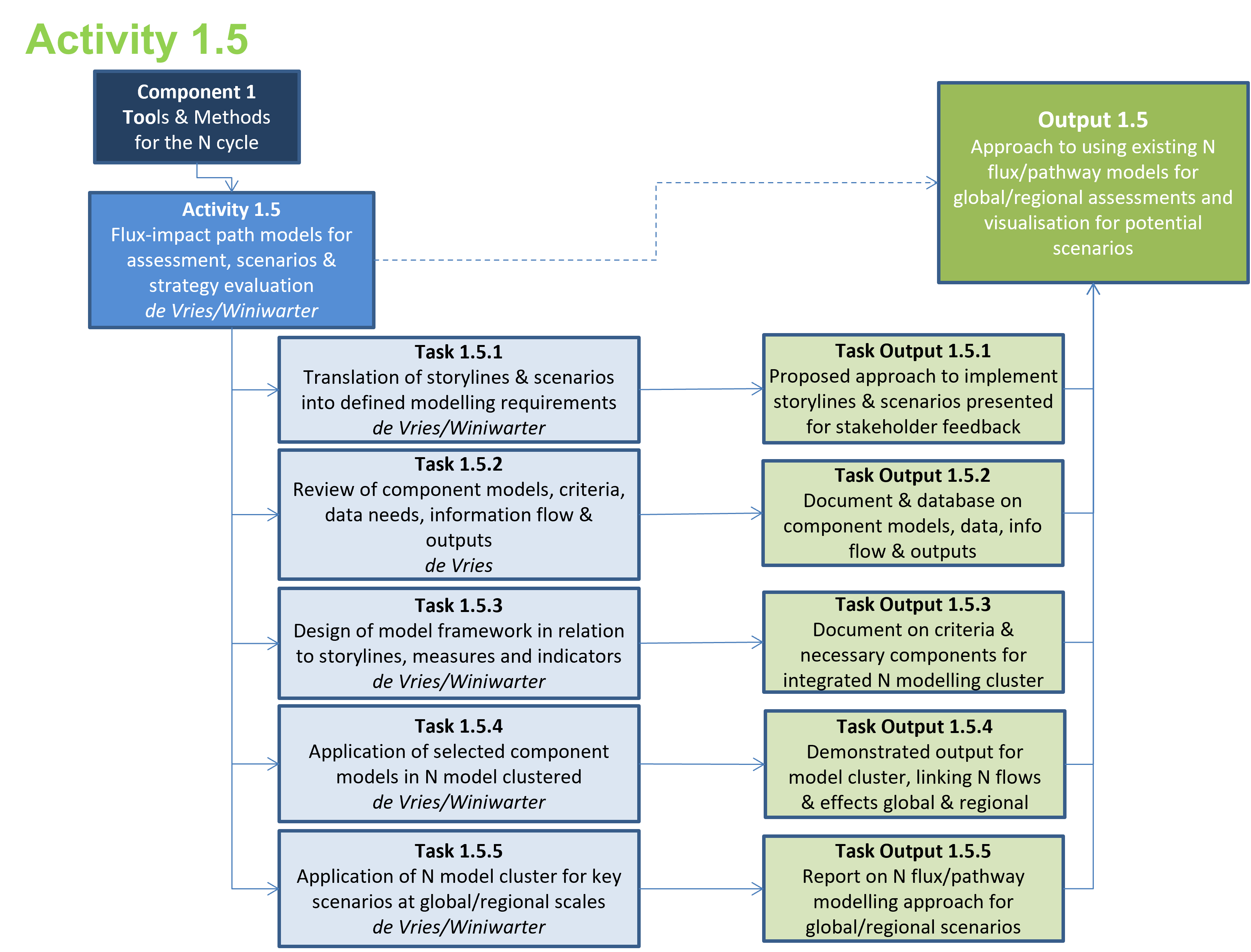Activity 1.5 - Flux-impact path models for assessment, scenarios & strategy evaluation
The purpose of this activity is to develop a coordinated approach to modelling nitrogen flows and impacts at global and regional scales. Numerical models provide valuable tools to support decision-making in relation to the environment with a wide range of models already existing. In most cases, however, existing nitrogen modelling capability has been split between issues that have become separated through specialisation into to specific topics. The core challenge is therefore to foster stronger cooperation between modellers with expertise in different parts of the nitrogen cycle, in order to provide a foundation for more comprehensive assessment of impacts on global and regional scales. Work is firstly needed to review the available modelling capability and to bring different areas of expertise together. As part of this, criteria for model suitability needs to be developed according to the purpose. Here the focus is on delivering a suite of modelling tools that can work together to indicate the scale of threats and benefits, their spatial distribution at global and regional scale and the potential for the adoption of management options to be reflected in the models as a basis to show how they can improve conditions (reduce adverse effects, increase benefits).
A start in this activity has already been made during the Towards INMS Project Preparation phase using funds provide through the INMS Pump Priming Workshop (Edinburgh, May 2015). This has allowed a first examination of different modelling approaches, including starting to bring the different areas of expertise together.
Task 1.5.1 is developing the necessary suite of N models is to consider which fluxes, levels and impacts, and which management options would need to be considered in order to adequately evaluate future scenarios
The purpose of task 1.5.2 is to take stock on available nitrogen models for regional and global application, as the starting point for developing further cooperation. This is building on the analysis already started during the PPG phase through the INMS Pump Priming Workshop (Edinburgh, May 2015).
Task 1.5.3 taking the next step in designing a more detailed framework for modelling within INMS. For this purpose different modellers are working together to identify both the overarching structure that is needed, but also the potential models that can form components in this structure
Based on the prior work, Task 1.5.4 is focusing on demonstrating a model cluster that links together different aspects of the nitrogen cycle to support the overall assessment process. The first 12-18 months of Towards INMS will focused on improving mutual understanding on the different modelling capabilities in relation to the identified needs (Tasks 1.5.1-1.5.3)
Task 1.5.5 allows for finalizing the delivery of the model cluster as a working tool for application in Component 2.
Activity 1.5 is being delivered under Component 1. The diagram below shows the tasks and task outputs deliviered for this activity.

